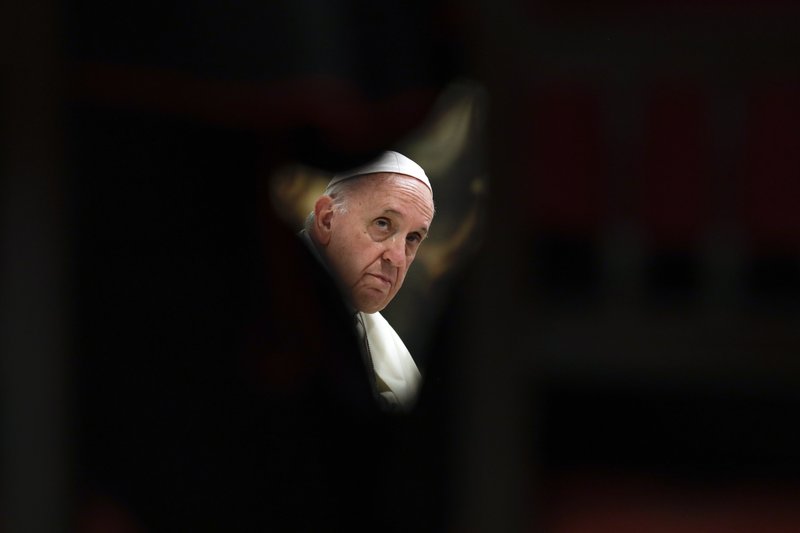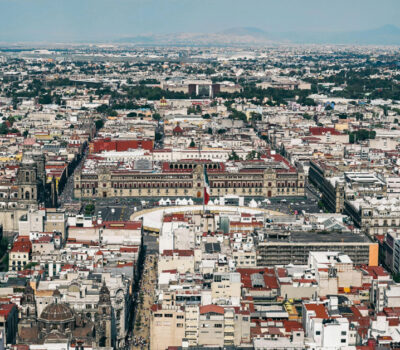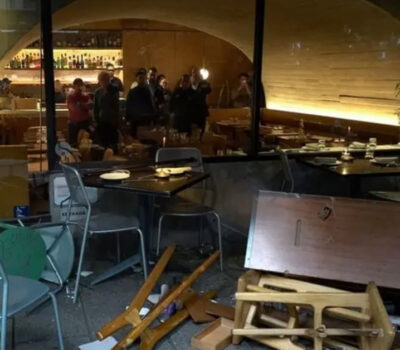Pope Francis’ role in Argentina’s most famous case of priestly sex abuse is coming under renewed scrutiny as he faces the greatest crisis of his papacy over the Catholic Church’s troubled legacy of cover-up and allegations he himself sided with the accused.
Francis, who at the time was still Cardinal Jorge Mario Bergoglio, in 2010 commissioned a four-volume, 2,000-plus page forensic study of the legal case against a convicted priest that concluded he was innocent, that his victims were lying and that the case never should have gone to trial.
The Argentine church says that the study obtained by The Associated Press — bound volumes complete with reproductions of Johannes Vermeer paintings on the covers — was for internal church use only. But the volumes purportedly ended up on the desks of some Argentine court justices who were ruling on the appeals of the Rev. Julio Grassi.
Despite the study, Argentina’s Supreme Court in March 2017 upheld the conviction and 15-year prison sentence against Grassi, a celebrity priest who ran homes for street children across Argentina.
The study, and Francis’ role in the Grassi case, have taken on new relevance following allegations by a former Vatican ambassador that Francis, and a long line of Vatican officials before him, covered up the sexual misconduct of a prominent U.S. cardinal.
Neither Francis nor the Vatican has responded to the allegations that Francis rehabilitated ex-Cardinal Theodore McCarrick from sanctions in 2013. The Vatican didn’t respond to a request for comment about Francis’ role in the Grassi case.
In an exclusive interview with AP, Grassi’s victim, Gabriel, said he is still waiting for Francis to acknowledge his pain, given the Supreme Court has now ruled that he indeed was assaulted by Grassi when he was 13.
“I’d like for the church to say something, even though I don’t expect it will,” Gabriel told AP, sitting next to his psychiatrist. “No one ever reached out to me,” he said. “No one bothered.”
Francis, the former archbishop of Buenos Aires, wasn’t Grassi’s bishop and bore no direct responsibility for him. But in 2006, he was quoted by the now-defunct Argentine magazine Veintitres as saying the accusations against Grassi were “informative viciousness against him, a condemnation by the media.”
He said he would withhold judgment pending the outcome of the court case, but Grassi himself testified that Bergoglio had “never let go of my hand” throughout the legal process.
Under Bergoglio’s presidency, Argentina’s bishops conference in 2010 enlisted a leading Argentine criminal defense attorney, Marcelo Sancinetti, to research a counter-inquiry into the prosecutors’ case against Gabriel and two other former residents of Grassi’s Happy Children homes whose cases were thrown out in the initial trial.
In the study, Sancinetti concluded that not only weren’t the accusations against Grassi sufficiently proven, “the falsity of each one of the accusations is objectively verifiable.”
In the four tomes, which were produced at an annual clip from 2010-2013, Sancinetti accused Gabriel of changing his story and trying to extort Grassi. But a court years earlier had already thrown out a criminal complaint filed by Grassi accusing Gabriel of extortion.
Sancinetti compared the “current trials and condemnations with severe sentences based exclusively on the word of a person who calls itself victim of sexual abuse to the trials for witchcraft of the Middle Ages.” And in the final volume and on his law firm’s website, Sancinetti said Francis in particular had commissioned the work. He didn’t respond to multiple requests for comment.
Argentina’s Supreme Court disagreed with Sancinetti’s analysis, and on March 21, 2017, upheld Grassi’s 2009 conviction for having sexually abused and corrupted Gabriel.
Through tears, Gabriel had testified that on two separate occasions in 1996 the priest once fondled him, and then performed oral sex on him in his office.
Gabriel, who for a time was placed in Argentina’s witness protection program after suffering a break-in, physical attacks and threats, said he was shocked when Grassi testified that Bergoglio “had never let go of my hand.”
“We were all like ‘wow!’ It was Bergoglio,” he said.
Gabriel said he and his lawyer delivered a letter addressed to Francis two months after he was elected Latin America’s first pope, bringing it to the Vatican embassy in Buenos Aires on May 8, 2013.
In the letter, Gabriel identified himself as a victim of “aberrant crimes of repeated sexual abuse and corruption” by Grassi.
He lamented that court-protected details of his abuse had been exposed by the study, which he said had “denigrated” him personally and contradicted the stated “zero tolerance” policy of both Pope Benedict XVI and Francis.
“I suffered and continue to suffer,” he wrote.
He asked for an audience with the pope “and I earnestly beg you for compassion and help in recovering my faith.”
He never received a reply. In fact, his lawyer said they were threatened at the embassy and don’t know what became of the letter.
Asked why the Argentine bishops conference had commissioned the study, a conference spokeswoman said it was to help bishops understand the case better.
“The bishops conference considered that it could provide more information in view of the canonical procedure,” the conference said in a statement to AP.
Such a study, however, would be unthinkable for use in a canonical trial. While church trials do make use of police investigations and evidence from secular courts, a counter-study commissioned by an entire bishops’ conference could run into jurisdictional problems at a canonical trial, canonists said.
In addition, Gabriel’s attorney, Juan Pablo Gallego, said the books ended up on the desks of some Argentine judges deciding Grassi’s appeals and represented what he called a blatant, albeit unsuccessful lobbying attempt.
The diocese of Moron, which was responsible for Grassi, had long defended its decision to keep him in ministry even after the trial began by saying it didn’t want to prejudice the outcome.
Eighteen months after Argentina’s high court ruled against him, Grassi remains a priest as he serves his 15-year sentence in the Unidad 41 de Campana prison in the province of Buenos Aires.
The Moron diocese said Grassi had been removed from pastoral duties when the trial began, and that he now has been restricted from exercising any public ministry. The diocese told AP that the canonical case is now with the Congregation for the Doctrine of the Faith, the Vatican office that handles sex abuse cases.
Julieta Anazco, president of Argentina’s Survivors’ Network of Ecclesiastical Abuse, said the Grassi case was a watershed for Argentina since the victims went up against a celebrity priest who had the backing of Argentina’s Catholic elite, and suffered the public humiliation of being accused of only seeking money.
“They have made the path of our struggle easier for us,” she said. “Thanks to their struggle, many of us were encouraged to denounce (our abusers) publicly.”
She cited the recent case of hearing-impaired victims of the now-notorious Antonio Provolo Institute who came forward to denounce abuse by the same Italian priest accused by Italian Provolo students who in 2014 alerted Francis and the Vatican to his whereabouts. Argentine police have arrested the Rev. Nicola Coradi and raided Provolo schools.
“Before Pope Francis can enact accountability for bishops and other church leaders, he has to own up to the harm he himself caused victims in Argentina,” said Anne Barrett Doyle of the online resource Bishop Accountability, which has gathered the documentation on the Grassi saga.
The case has parallels to that in neighboring Chile, where Francis repeatedly defended a bishop accused of covering up for the country’s most notorious predator, the Rev. Fernando Karadima. Francis discredited Karadima’s victims, who placed Bishop Juan Barros at the scene of their abuse, saying their accusations were “calumny.”
Francis eventually acknowledged he had made “grave errors in judgment” about Barros, apologized to the victims and launched a Vatican investigation that resulted in all of Chile’s active bishops offering to resign.
He has offered no mea culpa about the Grassi case. Gabriel, who works odd jobs off the books and has no credit card, is waiting.
“I’m Catholic, but yes, there are moments when I don’t know if the church represents me.”
___
Winfield reported from Rome.
Pope Francis’ role in Argentina’s most famous case of priestly sex abuse is coming under renewed scrutiny as he faces the greatest crisis of . . .












